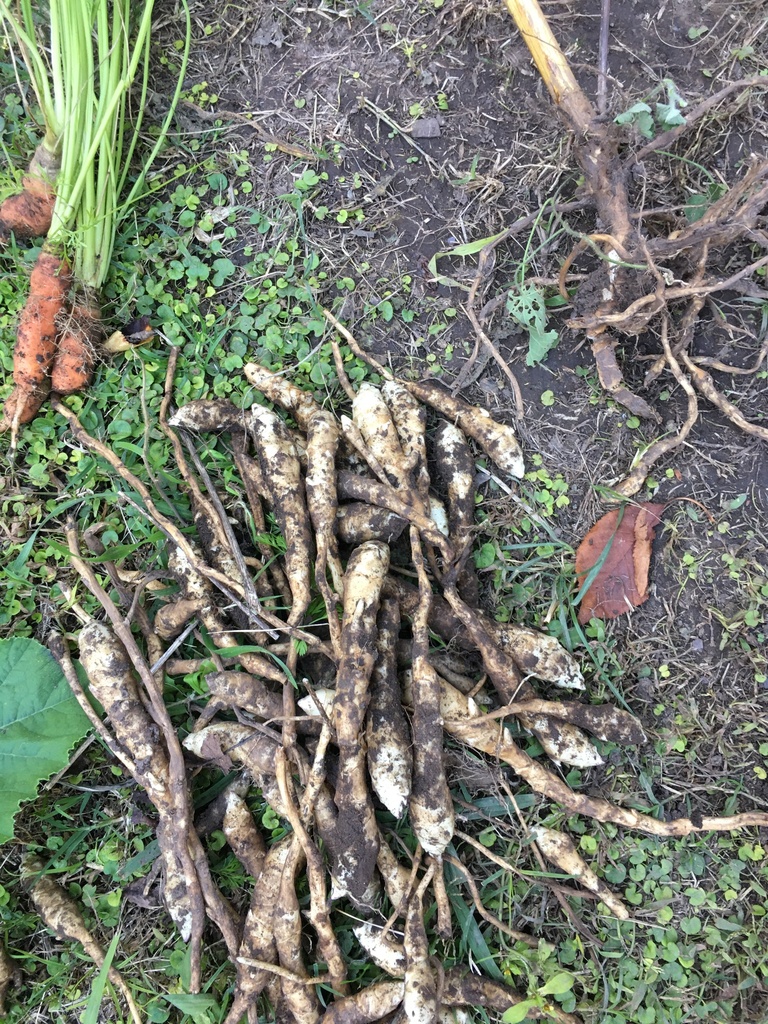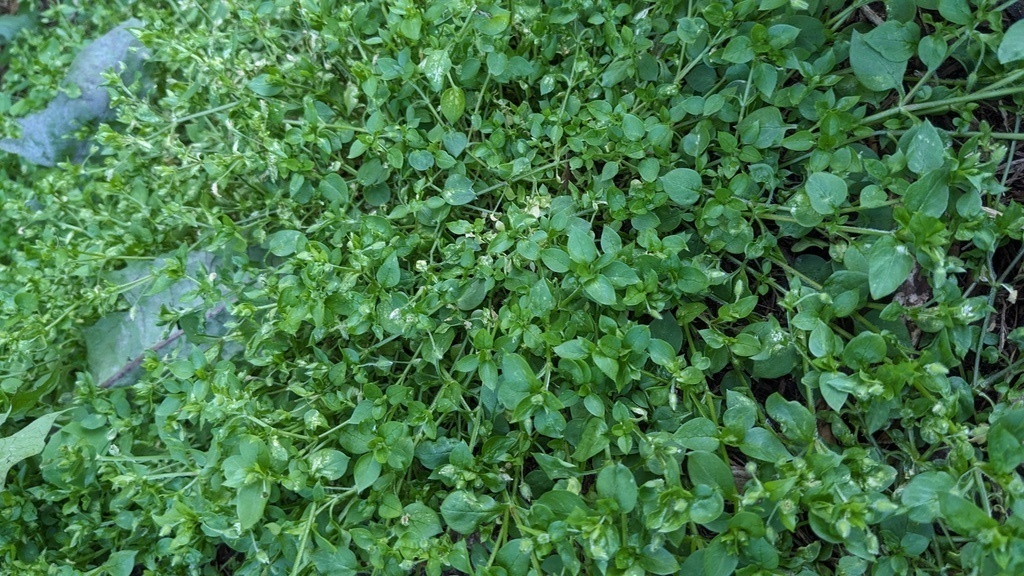Here in Ohio, it is beginning to feel like spring quite early in the season. Some plants are even beginning to bud out here, the silver maple being probably the most conspicuous. Days above 50 F mean the plant world is coming awake. Still, it is February, and the beginning of the growing season is a ways away yet. Though it is the slimmest time of the year just before the spring greens emerge, there are a variety of plants available for winter foraging.
Harvesting Note
My descriptions of how the plants are harvested are not to be taken as instructions. I intend only to give you an idea of what kind of processing will need to be done. For proper processing instructions, there are many more resources out there that aren’t too difficult to find. If you get a couple of good books (ask a forager you know or start with Samuel Thayer) that will be all you need.
Nuts
Hopefully you collected these in fall. It may be tough to find any good ones between weathering and squirrels, but with a dry hillside, thick leaf litter, or other good conditions, it may be possible.
Try for acorns, walnuts, hickory nuts, hazelnuts, etc. All are edible, but some are easier to process than others. For instance, acorns need to go through a soaking process to leach out the tannins and some hickory nuts have a very hard, convoluted shell with very little nutmeat. But some are as simple as cracking and eating. Just check each one for rotting. And if you don’t fancy worms, don’t bother cracking the ones with pinholes in them.
Roots
 Roots: the primary food crop of winter. Since perennial plants must store their energy underground to survive the winter, this is where the food is. If there are only roots, there may not be anything worth digging up. However, a huge portion of perennials have a tuber, corm, rhizome, or bulb, and these are full of carbohydrates.
Roots: the primary food crop of winter. Since perennial plants must store their energy underground to survive the winter, this is where the food is. If there are only roots, there may not be anything worth digging up. However, a huge portion of perennials have a tuber, corm, rhizome, or bulb, and these are full of carbohydrates.
The easiest places to dig will be wet areas. On a day when the ground isn’t completely frozen, you dig into the mud where you know a plant to be. Out comes a network of roots and light-colored, rounded tubers. It may be the coldest kind of winter foraging, but it can yield the most in the way of calories.
In marshy areas, some notable species are Jerusalem artichokes (sunchokes), duck potatoes, and chufa (there is a lookalike with no tubers). In drier areas are spring beauty, wild carrot, dandelion, chicory, creeping bellflower, and mallow roots.
There is another group of roots that are used more for their aromatic compounds than their calories, such as sassafras, and tend to be good to harvest all year.
Greens
While this seems the least likely of all winter foods, they nevertheless exist. Some plants are extremely cold hardy and while most don’t go all the way through the winter, there tends to be some green leaves at all times. There are those that persist into fall, those that emerge way early, and some that are used to even colder temperatures and aren’t bothered by your local climate.
If you want to guarantee greens in the winter, a high tunnel or hoop house is perfect. It tends to give enough cover from frost and a little boost of warmth when the sun shines. Winter greens can go wild in a high tunnel.
Fall stragglers include any cold hardy crop left over in your garden. This may be the easiest place to do your winter foraging!
– Brassicas (Kale, brussels sprouts, cabbage, etc.)
– Spinach
– Beets
– Parsley
– Field garlic

Chickweed (Stellaria media)
First ones out include:
– Chickweed
– Wild onions
– Purple dead-nettle
– Common mallow
– Wild radish
– Ground ivy
– Fennel
– Miner’s lettuce (Thayer, 2017)
– Watercress
– Garlic mustard
– Dandelion
Bark
A real survival food, but a nutritious one nonetheless. Pine bark is the best bark for eating (the inner bark, not the outer). It must be dried and pounded to make a flour, otherwise it’s hard to chew.
Under bark, I will also mention syrup. Every tree has sap, maples have just become best known for it. As soon as you get nights below freezing and days above freezing, sap will be flowing. The first trees to run are sycamore, maple, birch, hickory, and walnut (MacWelch).
It is best to reduce (boil) sap to get nutrients and flavor in any concentration, but you can also drink it straight instead of water. With the incredible amount of minerals, it is like an electrolyte drink in itself. Keep in mind, however, this is the precious lifeblood of the tree. Tap wisely and respectfully.
Evergreens
Vitamin C is necessary for our immune response, but it can be hard to come by in the winter. It is most often found in fruits. Many evergreens, however, are still providing it all winter in their leaves. Again, processing instructions vary, but pine needles are the easiest. Just boil them in water.
In early spring, the growing tips are a great food source. New needles on pines and spiny tips on spruces will be soft and bright green. They have a bright, lemony flavor too, and can be eaten straight.
Seeds and Fruits
The chances of finding seeds or fruits that are still on the branches may be rather low, but searching may be worth it. After all, without insects around, seeds and berries are what birds eat in their winter foraging. Watch the birds, in fact. They’ll be able to show you if the seed pods up in that tree are full of seeds or empty. Don’t use birds as your indicator of edibility, however. Not everything that is poisonous to us is poisonous to them.
One of the best examples of this is rosehips – lots of species, all edible and nutritious, not all super pleasant to eat. Hackberry, amaranth seeds, and Kentucky coffeetree are also available (Thayer).
What NOT to Harvest
Poison Hemlock
 I’m not going to cover all the toxic plants that might persist in fall or appear in spring wherever you may be. One thing I will warn you of, however, is poison hemlock. It is out now, and it looks so green and fresh, like lush carrot tops. Like a friend of mine discovered, even if it looks like it wants to be eaten, it may not be good. (She was fine. She only ate a small amount to test it out and recovered quickly. Testing is a good practice when you start foraging.)
I’m not going to cover all the toxic plants that might persist in fall or appear in spring wherever you may be. One thing I will warn you of, however, is poison hemlock. It is out now, and it looks so green and fresh, like lush carrot tops. Like a friend of mine discovered, even if it looks like it wants to be eaten, it may not be good. (She was fine. She only ate a small amount to test it out and recovered quickly. Testing is a good practice when you start foraging.)
In fact, most of the plants in the family Apiaceae are cold hardy, so they start looking delicious in early spring. While carrots, wild carrots, and parsley are edible, there is a good portion of plants in this family in particular that are poisonous. It is useful to learn plant family identification for this purpose.
There may be other toxic plants emerging, especially as spring comes around, but poison hemlock is the biggest one to watch out for. It is both common and very deadly.
Responsible Harvesting
The other thing I wanted to bring attention to was rare or over-foraged crops. Unless you’re starving, don’t go for things like ramps or trout lily, as they are endangered. In order to make sure the edible plants that are hanging on in our largely modified landscapes remain the precious resources they are, a good rule of thumb is not to pick more than 10% of a patch.
Tasting, however, is highly encouraged. Try small bits of any edible plant you find. This is the best way to get to know them so that when disaster really occurs and you need to rely upon them you will already have a relationship and feel safe in nourishing yourself from the land.
Conclusion
While it may seem impossible to find edible foods at this time of year, there are still some options. Winter may actually be the best time to work on your foraging skills. If disaster makes you hungry, winter is when you won’t be able to grow anything. It will be your most vulnerable time, so learning winter foraging will give you the most return on your investment.
Happy eating!
Thayer, Samuel. Nature’s Garden. Forager’s Harvest Press, 2010.
Thayer, Samuel. Incredible Wild Edibles. Forager’s Harvest Press, 2017.
MacWelch, Tim. “Seasonal Foraging: Feast and Famine.” Survival Dispatch Insider, Vol.4 Iss. 1, p. 68.
=====
Become a Survival Dispatch Insider …
We bring together survival enthusiasts and preppers to share skills and knowledge, so you can enhance your preparedness for emergencies and ensure the safety of you and your community.
The Results You’ll Get …
Our community, courses, and memberships are pretty special. We focus on the ways it will make a huge difference in your life.
Here are a few of the things you’ll be able to do as a member of Survival Dispatch Insider …
1) Improve your emergency preparedness by learning survival skills and strategies from experienced preppers.
2) Build lasting connections with like-minded individuals that share your passion for safety and readiness.
3) Access a wealth of knowledge and resources to assist in protecting you and your community during unexpected situations.
Click HERE to get started.
=====
